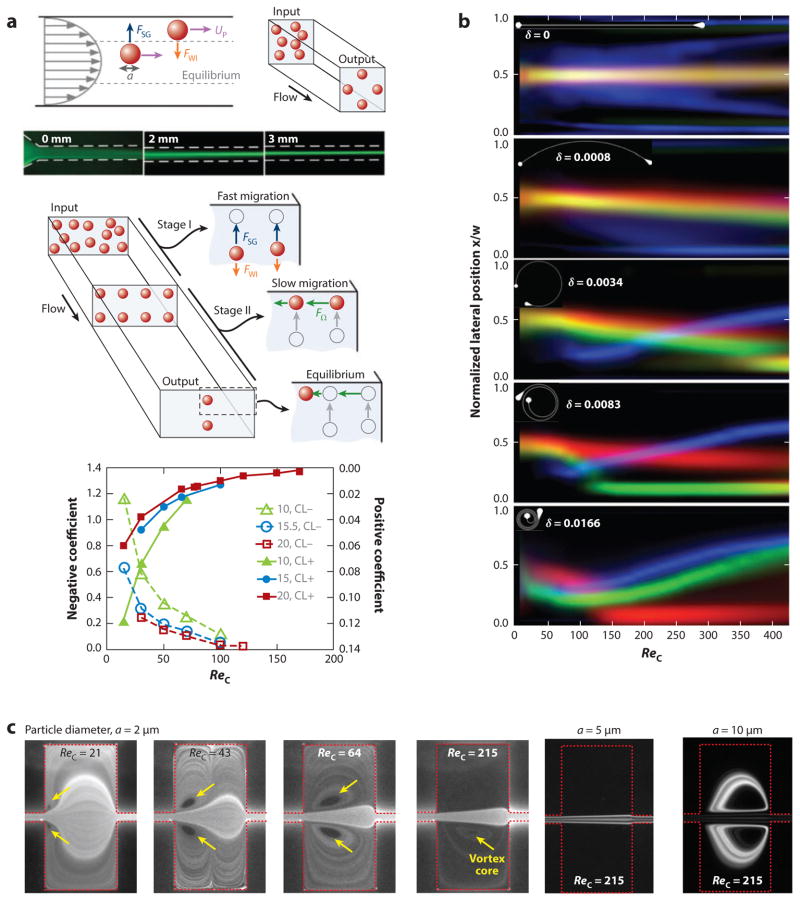Figure 4.
Results from highlighted empirical studies. (a) The negative (shear gradient lift and wall interaction forces) lift coefficient and positive (slower motion to the center of rectangular faces) lift coefficient. (Panel reproduced from 30 with permission from The Royal Society of Chemistry.) (b) Sample results from a study of focusing in curved channels, decoupling Reynolds and Dean numbers. Plots show the equilibrium behavior at each flow condition for particles of different diameter (red, 15 μm; green, 9.9 μm; blue, 4.4 μm). δ = (Dh/(2ReC))1/2 and is the Reynolds number–independent part of the Dean number (59). (c) Vortex formation in an expansion/ contraction device as well as the high-ReC behaviors of trapping large (10-μm) particles while allowing smaller (5-μm) particles to pass. (Panel reprinted with permission from 66. Copyright 2011, AIP Publishing LLC.) Abbreviations: a, particle diameter; FSG, shear gradient lift force; FWI, wall interaction force; FΩ, rotation-induced lift force; ReC, channel Reynolds number; UP, particle velocity.

